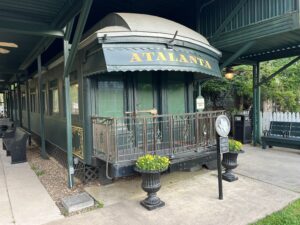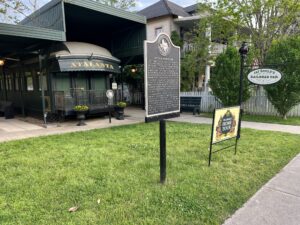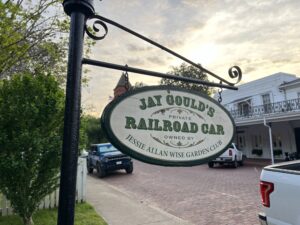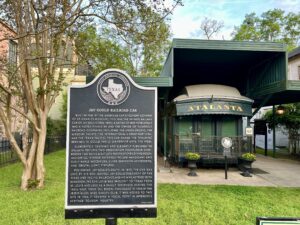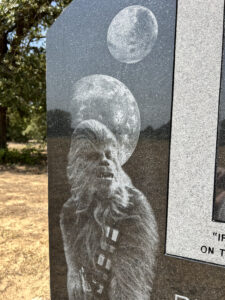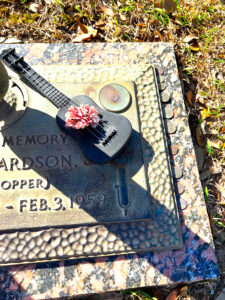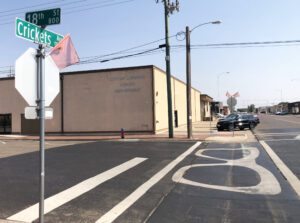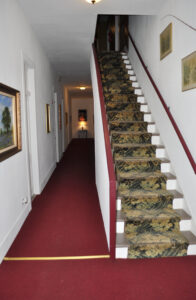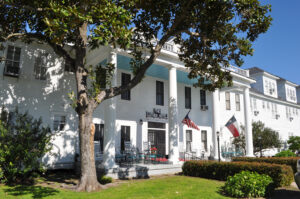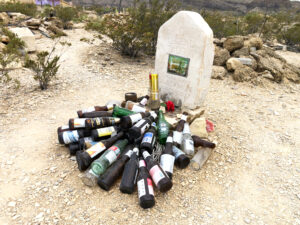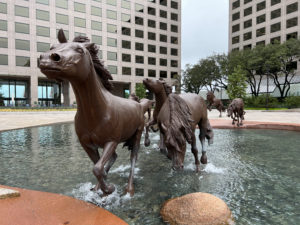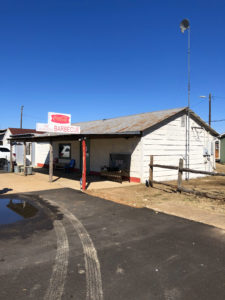 When I’m traveling, I often seek out local farmer’s markets – not only for affordable, fresh food, but also to get a taste of local culture. Especially when visiting other countries, travelers can find adventures-for-the-tastebuds they won’t find at home.
When I’m traveling, I often seek out local farmer’s markets – not only for affordable, fresh food, but also to get a taste of local culture. Especially when visiting other countries, travelers can find adventures-for-the-tastebuds they won’t find at home.
But when you live in the fourth largest city in the U.S., there are a lot of markets to explore even when you aren’t on vacation! So this morning I set out on a local food adventure.

 I guarantee you that I didn’t come home from my visit to the Houston Farmer’s Market this morning empty-handed! It had its beginnings in 1942 and is the city’s oldest and largest farmers market.
I guarantee you that I didn’t come home from my visit to the Houston Farmer’s Market this morning empty-handed! It had its beginnings in 1942 and is the city’s oldest and largest farmers market.
There’s no shortage of herbs and spices…and more types of mole than you can shake an enchildada at!
Tropical fruit lovers are going to be in heaven the minute they step foot in the market…and that group includes me! One sample bite of the sweet pineapples and I was “sold!”
Be a bit adventurous when you visit local markets, and try something new! If you come across a fruit (or anything else) that you can’t identify, ask questions. Vendors are happy to explain what things are, how to prepare them, and sometimes even offer a free taste.
Every trip should send you home with at least one “never had this before” item.

 A handful of permanent shops are in the complex as well, including Shop Local, The Egg House, RC Ranch Craft Meats and Crawfish and Noodles restaurant. Shop Local is a group of vendors that sell a variety of items from vintage clothes to stickers. The Egg House sells everything breakfast-related, including country sausage, bacon jams, local honey, and …of course…fresh eggs. RC Ranch Craft Meats butcher shop deals in Texas-raised Wagya beef and Heritage pork as well as other meats from partner ranchers.
A handful of permanent shops are in the complex as well, including Shop Local, The Egg House, RC Ranch Craft Meats and Crawfish and Noodles restaurant. Shop Local is a group of vendors that sell a variety of items from vintage clothes to stickers. The Egg House sells everything breakfast-related, including country sausage, bacon jams, local honey, and …of course…fresh eggs. RC Ranch Craft Meats butcher shop deals in Texas-raised Wagya beef and Heritage pork as well as other meats from partner ranchers.
There are definitely more vendors on the weekends than during the week, but there’s always something fresh and delicious to find.
 You can even purchase cookware, pottery, plants, candy, piñatas and toys from south of the border.
You can even purchase cookware, pottery, plants, candy, piñatas and toys from south of the border.
And if you just don’t think you can wait to get home to enjoy something yummy, there are cute tables and chairs in shaded spots where you can enjoy freshly prepared offerings. It’s a fun place to go with friends, your spouse, or a great outing for the kids.
LOCATION: 2520 Airline Drive, Houston, Texas
HOURS: Open every day year-round except for Christmas Day and New Year’s Day, 6 a.m. to 7:30 p.m.
GOOD TO KNOW: Bring cash, as it is the only form of payment many vendors accept.
PARKING: Free parking. Enter the lot enter off of Airline Drive or two entrances off Service Street. Lots are interconnected for ease of access.
WHAT TO BRING: Lightweight shopping totes or small cart, and a cooler in your car for items that will need to stay cool on the way home.
WHAT TO WEAR: The shopping area is covered and has, which are big advantages in the Texas summer, but the market is still technically outdoors. Dress comfortably for whatever the outside temperature is during summer or winter. Walking shoes.
RESTROOMS: Clean and family-friendly.
Information is correct as of date of publishing.











